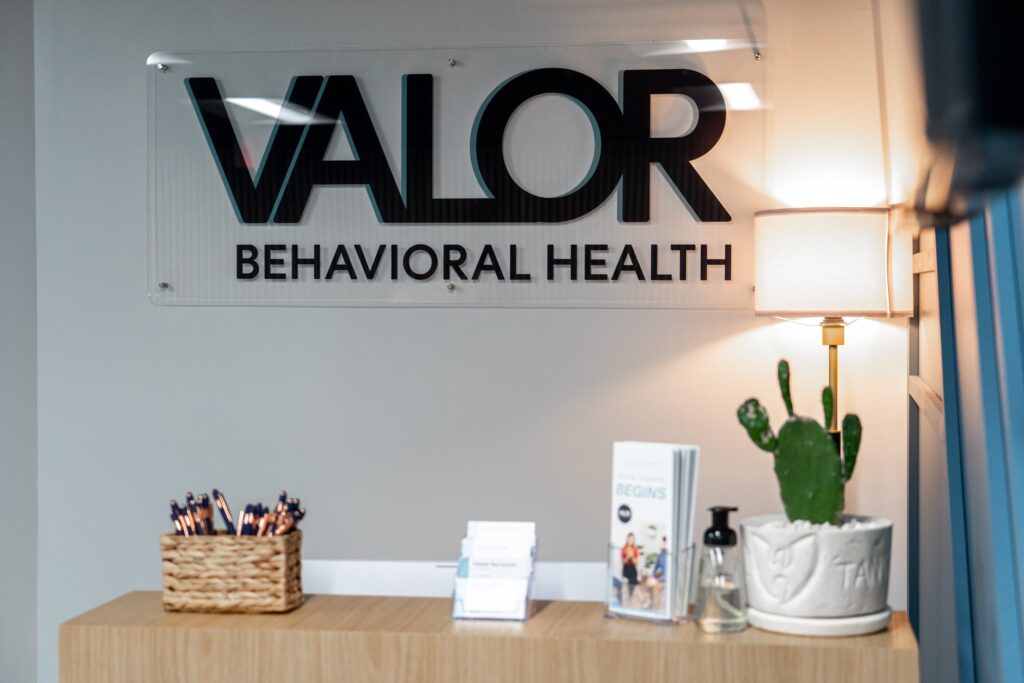The DSM-5 is an essential resource for mental and behavioral health professionals throughout the United States. But what is the DSM-5, and why is it so important?
Learn more about our Atlanta mental health programs or call us now at 866-859-3442.
What Is the DSM-5?
DSM-5 is the common shortened term for the fifth edition of the Diagnostic and Statistical Manual of Mental Disorders. It includes a wealth of vital information for a wide range of mental and behavioral health conditions, including:
- Diagnostic criteria and features
- Risk and prognostic factors
- Development and course
- Functional consequences
- Culture- and gender-related diagnostic issues
- Prevalence
- Differential diagnosis
- Coding
As the standard reference for treatment providers in the U.S., the DSM-5 ensures that clinicians, diagnosticians, and other experts employ common terminology and criteria when identifying and treating patients with mental illnesses and addictions.
The DSM was first published by the American Psychiatric Association (APA) in 1952. Since then, six revised editions have been released:
- DSM II (1968)
- DSM III (1974)
- DSM III-R (1978)
- DSM IV (1980)
- DSM-5 (2013)
- DSM-5-TR (2022)

How Is the DSM-5 Organized?
The DSM-5 includes a preface, four sections, and an appendix. Section II, which is the largest part of the book, includes diagnostic criteria for a host of mental health conditions, organized into the chapters listed below.
Please note that we have not included every diagnosable condition in the DSM-5. Instead, for each category, we’ve provided a few examples to highlight the types of disorders in that grouping.
Neurodevelopmental Disorders
This section of the DSM-5 includes conditions that impact brain development, with symptoms that usually begin to become evident during childhood. Examples include:
- Intellectual disability (Intellectual developmental disorder)
- Autism spectrum disorder (ASD)
- Attention-deficit/hyperactivity disorder (ADHD)
- Specific learning disorder
- Language disorder
- Tourette’s disorder
Schizophrenia Spectrum and Other Psychotic Disorders
Disorders in this chapter involve symptoms such as delusions, hallucinations, disorganized thinking, and grossly disorganized behaviors. Examples include:
- Schizophrenia
- Schizoaffective Disorder
- Brief psychotic disorder
Bipolar and Related Disorders
Bipolar disorders are characterized by dramatic swings in mood and energy. The most common bipolar disorders in the DSM-5 are:
- Bipolar I disorder
- Bipolar II disorder
- Cyclothymic disorder
Depressive Disorders
Depressive disorders are associated with persistent sadness, diminished energy and motivation, low self-confidence, and similar symptoms. Conditions in this chapter of the DSM-5 include:
- Disruptive Mood dysregulation disorder (DMDD)
- Major depressive disorder (MDD)
- Persistent depressive disorder (dysthymia)
- Premenstrual depressive disorder
Anxiety Disorders
Anxiety disorders cause symptoms such as excessive fear and/or disproportionate worry. This chapter includes:
- Generalized anxiety disorder (GAD)
- Panic disorder
- Separation anxiety disorder
- Selective mutism
- Specific phobia
- Social anxiety disorder (Social phobia)
- Agoraphobia
Obsessive-Compulsive and Related Disorders
Disorders in this chapter involve recurrent intrusive thoughts and/or repetitive behaviors that a person feels forced to perform. Examples include:
- Hoarding disorder
- Obsessive-compulsive disorder (OCD)
- Body dysmorphic disorder
- Trichotillomania (compulsive hair-pulling)
- Excoriation disorder (compulsive skin-picking)
Trauma- and Stressor-Related Disorders
These disorders occur in the aftermath of one or more traumatic or highly stressful experiences. Common conditions in this chapter of the DSM-5 include:
- Post-traumatic stress disorder (PTSD)
- Acute stress disorder
- Adjustment disorders
- Reactive attachment disorder
- Disinhibited social engagement disorder
Dissociative Disorders
Dissociative disorders cause people to feel as though they have become detached from their body, thoughts, emotions, or surroundings. Examples in the DSM-5 include:
- Dissociative identity disorder (DID)
- Dissociative amnesia
- Depersonalization/derealization disorder
Somatic Symptom and Related Disorders
This chapter of the DSM-5 includes conditions with physical symptoms that result from psychological distress. Examples include
- Somatic symptom disorder
- Illness anxiety disorder
- Conversion disorder
Feeding and Eating Disorders
This chapter of the DSM-5 includes conditions that are characterized by compulsive, abnormal eating-related behaviors, such as:
- Avoidant/restrictive food intake disorder (ARFID)
- Anorexia nervosa
- Bulimia nervosa
- Binge-eating disorder
- Pica
Elimination Disorders
Typically diagnosed in childhood or early adolescents, these conditions involve the inappropriate elimination of urine or feces, such as:
- Enuresis
- Encopresis
Sleep-Wake Disorders
Conditions in the DSM-5 that affect the duration and quality of a person’s sleep – or their ability to remain awake – include:
- Insomnia disorder
- Hypersomnolence disorder
- Narcolepsy
- Sleepwalking
- Sleep terrors
- Nightmare disorder
Sexual Dysfunctions
Examples of the 10 conditions in this part of the DSM-5 include:
- Premature ejaculation
- Female orgasmic disorder
- Female sexual interest/arousal disorder
- Genito-pelvic pain/penetration disorder
- Male hypoactive sexual desire disorder
Gender Dysphoria
The DSM-5 defines gender dysphoria as “the distress that may accompany the incongruence between one’s experienced or expressed gender and one’s assigned gender.”
Gender dysphoria replaces gender identity disorder, which was used in the DSM-IV. The rationale for this change, as explained in the introduction to this chapter, is that it identifies the dysphoria as the problem, not the individual’s gender identity.
Disruptive, Impulse-Control, and Conduct Disorders
Conditions in this chapter of the DSM-5 are linked with the inability to control one’s emotions and/or behaviors, such as:
- Oppositional defiant disorder (ODD)
- Intermittent explosive disorder (IED)
- Conduct disorder
- Pyromania
- Kleptomania
Substance-Related and Addictive Disorders
Substance use disorder is the clinical term for addiction. This chapter includes problematic behaviors involving a wide range of substances (and one behavior), such as:
- Alcohol use disorder
- Cannabis (marijuana) use disorder
- Hallucinogen-related disorders
- Inhalant use disorders
- Opioid use disorder
- Sedative, hypnotic, or anxiolytic use disorder
- Stimulant use disorder
- Tobacco use disorder
- Gambling disorder
Recommended: Dual-Diagnosis Treatment
Neurocognitive Disorders
Diminished cognition is a main symptom of the conditions in this category. Also, these disorders are typically acquired later in life, which differentiates them from developmental disorders:
- Delirium
- Major or mild neurocognitive disorder due to Alzheimer’s disease
- Major or mild neurocognitive disorder due to traumatic brain
- Major or mild neurocognitive disorder due to Parkinson’s disease
Personality Disorders
Personality disorders involve enduring patterns of inner experiences and behaviors that deviate substantially from a person’s culture and cause distress or impairment. There are 10 personality disorders in the DSM-5, including:
- Paranoid personality disorder
- Antisocial personality disorder
- Borderline personality disorder
- Histrionic personality disorder
- Narcissistic personality disorder
Paraphilic Disorders
Paraphilic disorders involve a variety of persistent abnormal sexual interests that cause distress or impairment to the individual or harm to others. Examples of the entries in this chapter include:
- Voyeuristic disorder
- Exhibitionistic disorder
- Sexual Masochism disorder
- Sexual Sadism disorder
- Pedophilic disorder

Who Can Use the DSM-5?
Anyone can purchase the DSM-5, which is sold in hardback, paperback, and e-book formats. It is also available for loan from most libraries.
However, while anyone can own, borrow, and read the DSM-5, it is important to understand that only trained and licensed professionals can legitimately use the information in this resource to diagnose someone with a mental or behavioral health disorder.
Reviewing the information in the DSM-5 can help you understand the criteria that are required for various diagnoses and become familiar with clinical terminology. But you should never attempt to use this information for diagnostic purposes.
The ability to accurately diagnose patients requires much more than simply referring to a few pages in a book. It demands years of education and experience, which is why only qualified professionals should ever take on this responsibility.
Recommended: Guide for Clinical Professionals
Contact Us to Learn More About Mental Health Treatment in Atlanta
If you suspect that you or someone that you care about has been exhibiting symptoms of a mental or behavioral health disorder, Valor Behavioral Health is here to help.
Our mental health treatment center is a trusted source of age-appropriate outpatient programming for adults and adolescents. We will work closely to determine the full scope of your needs, then identify the programs and services that can help you make sustained progress toward a healthier and more satisfying future.
To learn more about how we can help, or to schedule a free consultation, please visit our Admissions page or call us today at (866)859-3442.













